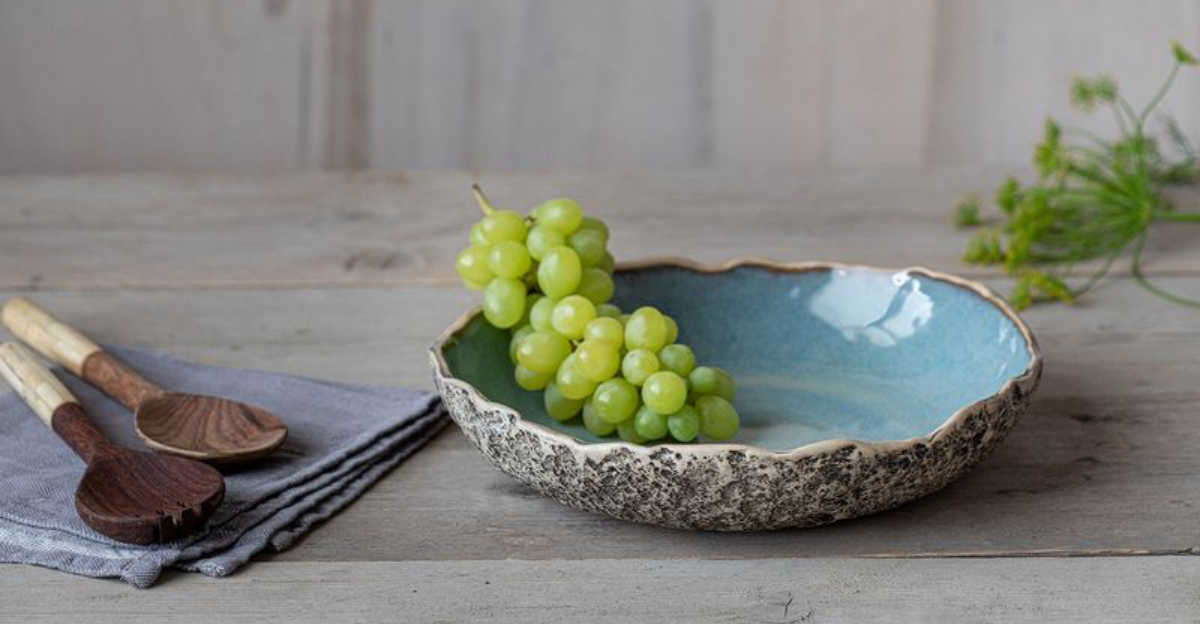Kitchen islands aren’t just functional workspaces—they’re the heart of your cooking area and deserve thoughtful styling.
Creating that magazine-worthy look doesn’t require expensive renovations or designer connections. With just a handful of strategic pieces placed correctly, your kitchen island can transform from cluttered catch-all to sophisticated focal point that both looks beautiful and enhances daily function.
1. Wooden Cutting Board

Lean a substantial cutting board against the backsplash or lay it flat as a base layer. Opt for rich walnut or maple with visible grain patterns that bring natural warmth.
The varied thickness creates visual interest while remaining completely functional for food prep. When not chopping vegetables, it serves as the perfect backdrop for other decorative elements.
2. Ceramic Fruit Bowl
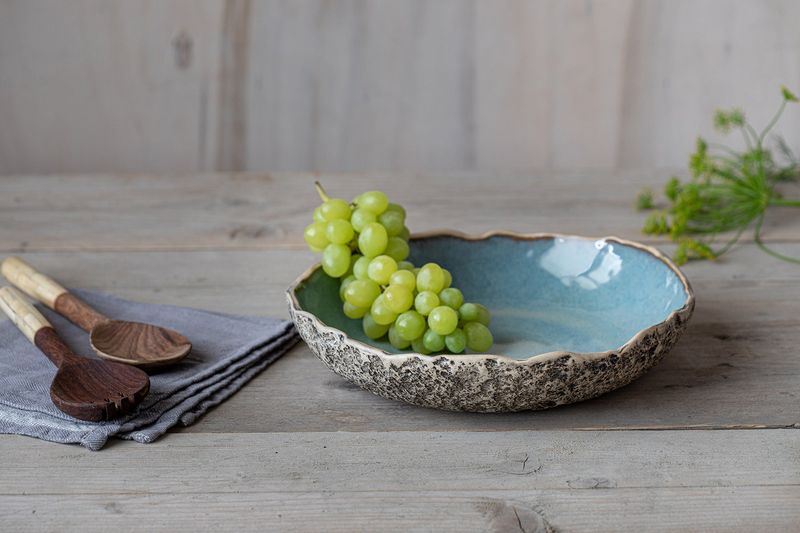
Select a bowl with an organic, slightly imperfect shape rather than perfectly round. Handmade ceramics in neutral tones (white, cream, or soft gray) provide subtle texture without competing with colorful fruits.
Fill partially—never to the brim—allowing the form of both container and contents to remain visible. The negative space is as important as what fills it.
3. Small Potted Herb
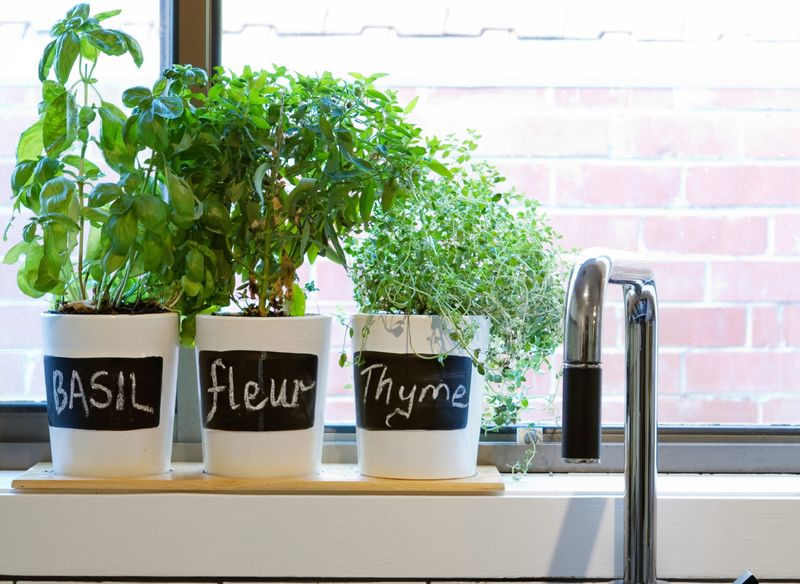
Rosemary, thyme, or basil in a simple terracotta pot brings height variation and a touch of green without fussiness. The subtle fragrance adds a sensory dimension missing from artificial plants.
Position toward the back of the island where it won’t interfere with work space. Bonus: snipping fresh herbs while cooking creates an instant farm-to-table experience right from your island.
4. Marble Salt Cellar
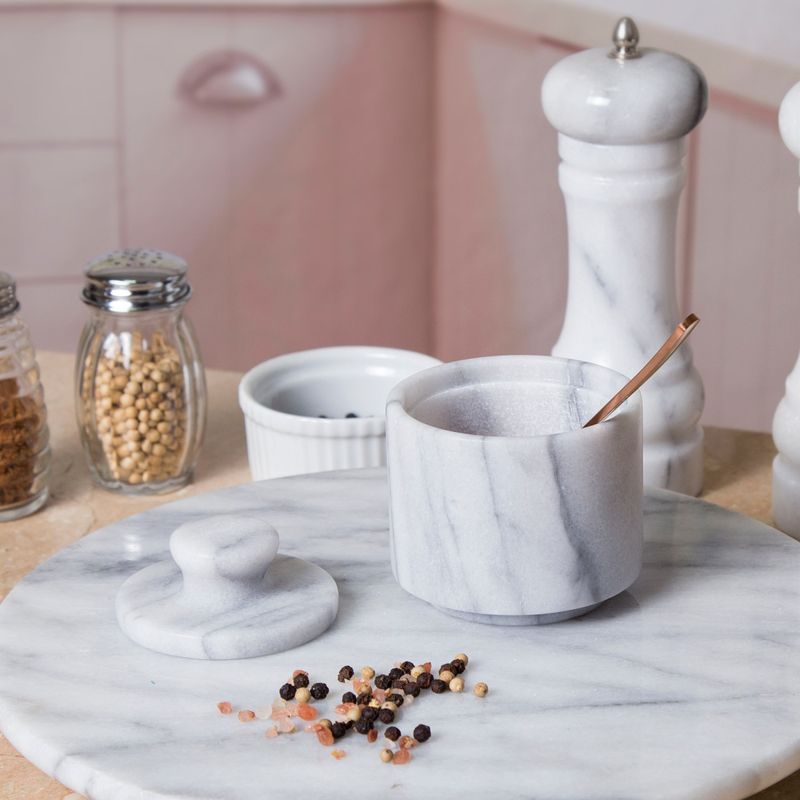
A palm-sized marble vessel with lid elevates the simple act of seasoning food. The weight and cool touch of stone signals quality without trying too hard.
Choose white Carrara or black marble depending on your countertop—contrast creates visual tension. Leave partially open with flaky sea salt visible, suggesting both functionality and careful attention to culinary details.
5. Linen Tea Towels
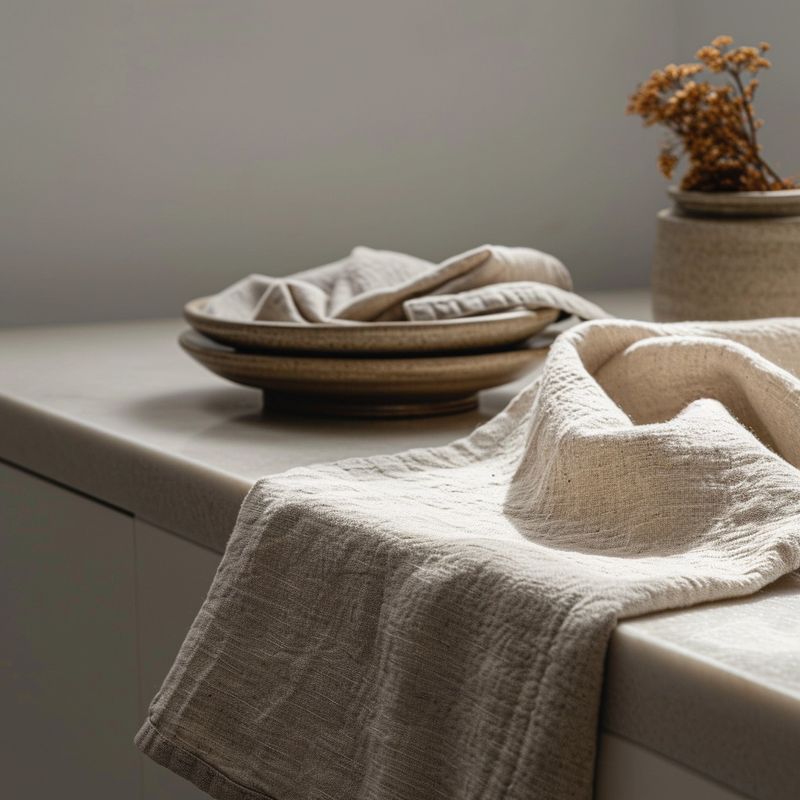
Fold a stonewashed linen towel in thirds, then drape it casually over one corner of the island. The slight wrinkle of natural linen creates approachable elegance—too perfect looks staged.
Stick with muted tones and minimal patterns that complement rather than compete. The textile breaks up expanses of hard surfaces while remaining entirely practical for quick hand-drying or pot-grabbing.
6. Glass Oil Dispenser
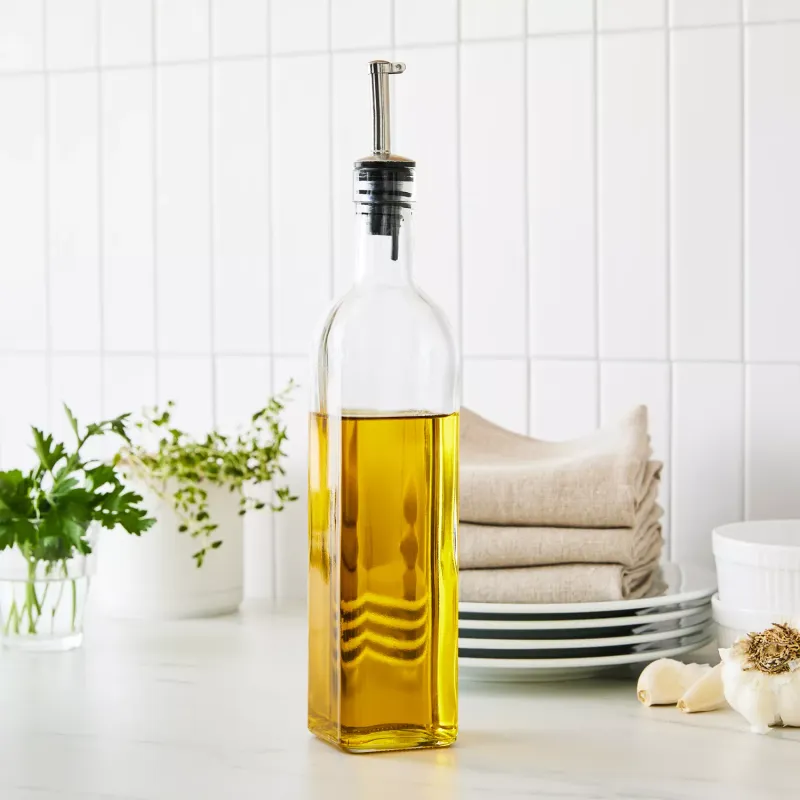
A streamlined glass bottle transforms ordinary cooking oil into a design element. Look for clean lines and a simple pouring spout—nothing overly decorated.
The amber tone of olive oil creates a warm color moment without adding another object. Group with salt cellar and pepper mill to create a functional trio that stays within reach during cooking sessions.
7. Handcrafted Wooden Spoons
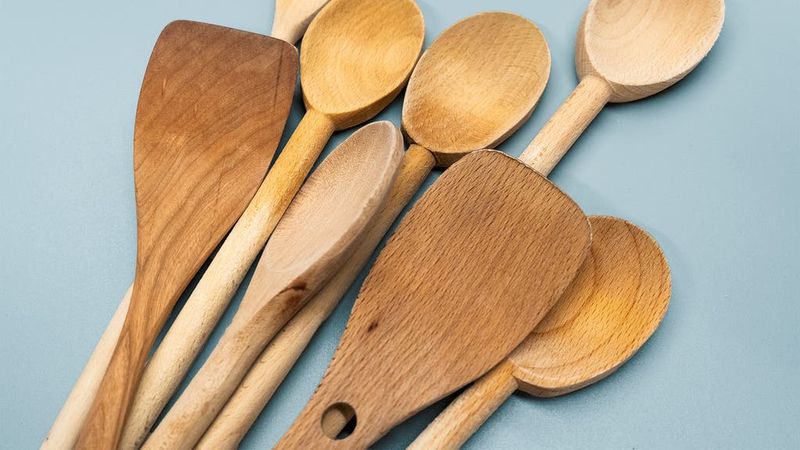
Gather three wooden utensils with varying lengths and shapes—perhaps a long mixing spoon, a curved spatula, and a broader stirring paddle. The different silhouettes create rhythm when grouped together.
Display in a tall ceramic vessel or lean against a cutting board. The worn patina and subtle differences in wood grain tell the story of meals prepared, adding authenticity no store-bought decor can match.
8. Small Stack of Cookbooks
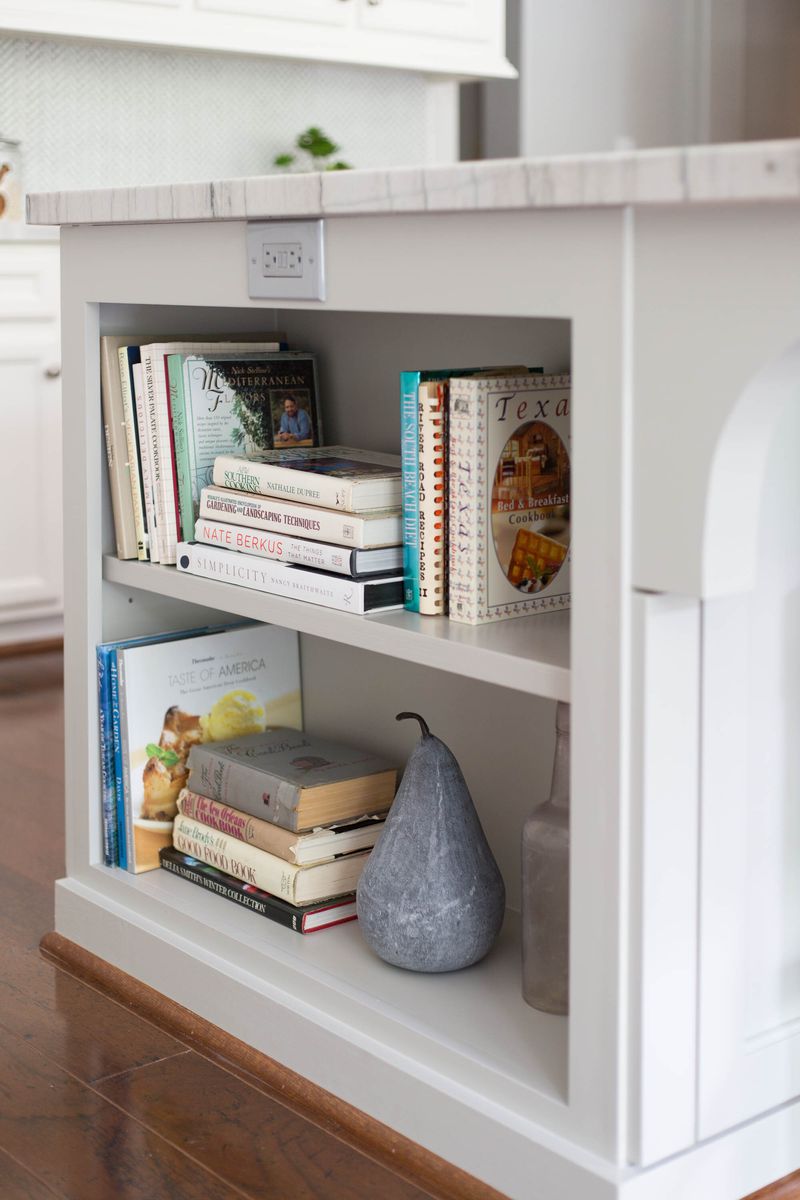
Select just two or three cookbooks with complementary spine colors and stack them horizontally. Avoid towering piles that look unstable—lower stacks appear intentional rather than cluttered.
Choose titles with beautiful photography that invite browsing while waiting for water to boil. Position away from cooking zones but visible enough to spark mealtime inspiration and conversation about favorite recipes.
9. Ceramic Utensil Crock
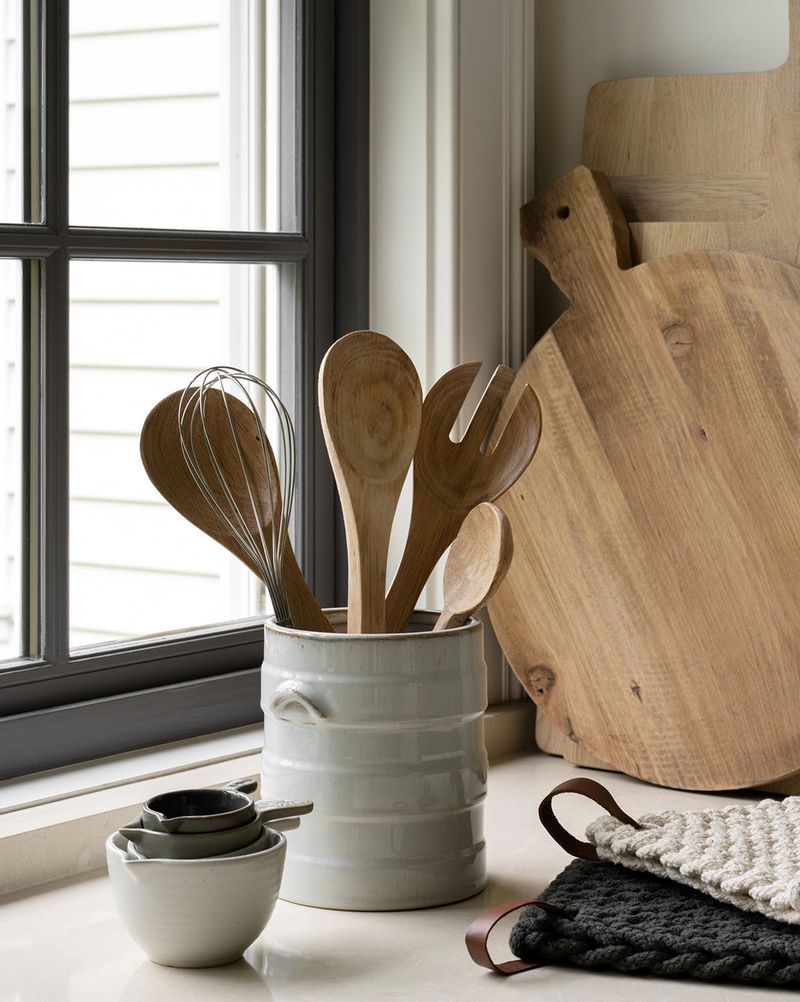
A substantial stoneware container corrals frequently used tools while adding vertical interest. Choose matte finishes over glossy for a more sophisticated look that doesn’t compete with shinier appliances.
Position near the cooking zone but not centered on the island, allowing it to serve as a functional punctuation mark in your kitchen composition.
10. Brass Pepper Mill
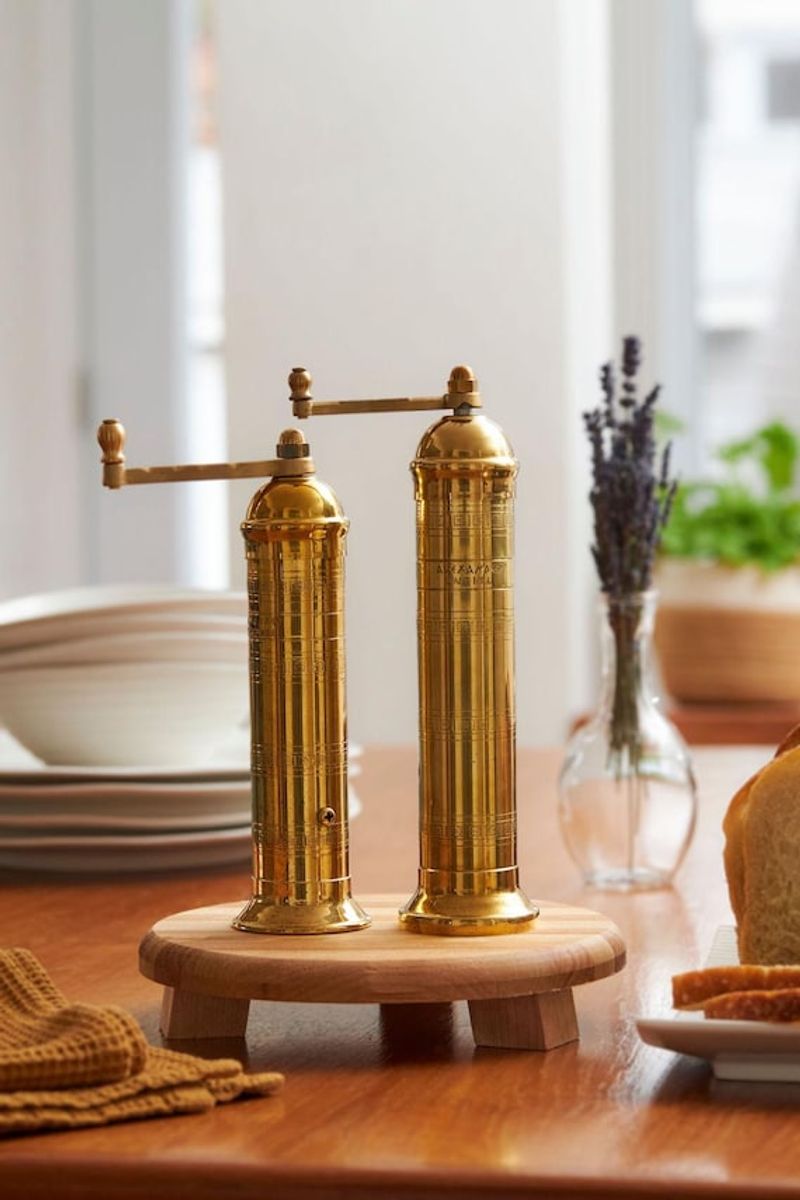
A weighty brass pepper grinder introduces subtle gleam without the maintenance of polished silver. The patina that develops over time only enhances its character—no need for constant polishing.
The substantial silhouette stands confidently alone or paired with salt. The mechanical quality signals serious cooking happens here, while the metal finish introduces material contrast against wood, stone, and ceramics.
11. Small Cheese Board
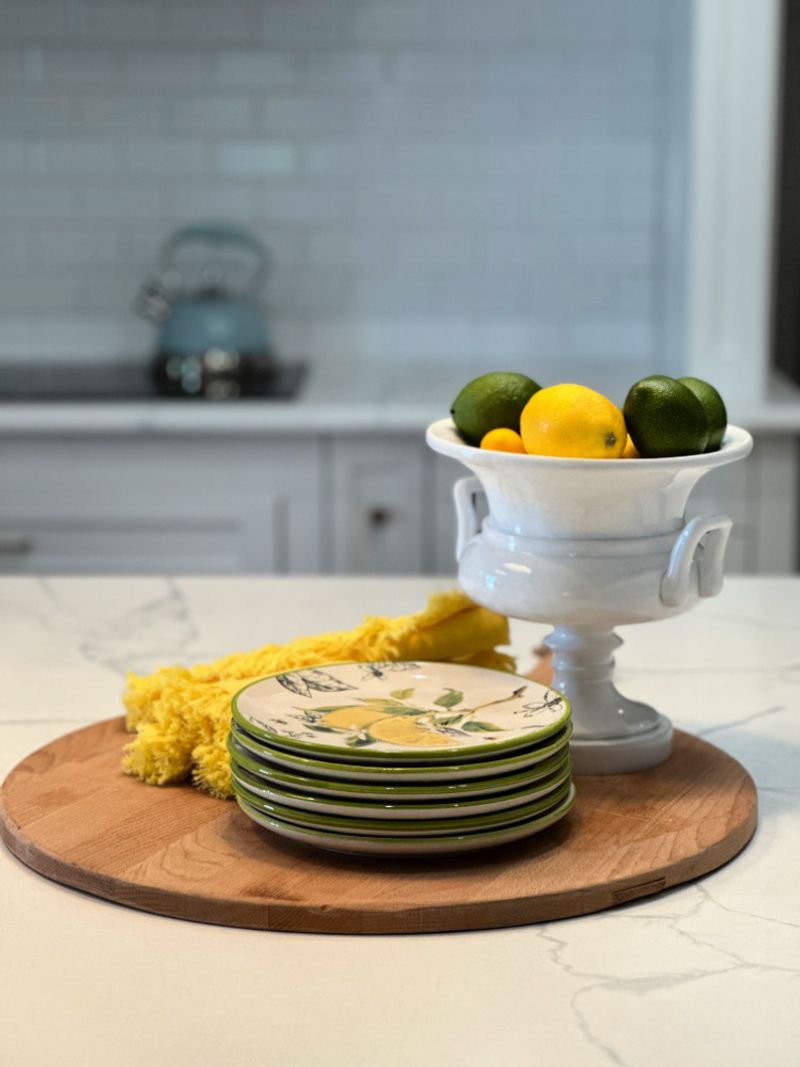
A round or irregular-shaped board in marble, wood, or slate creates a designated spot for spontaneous snacking. The 8-10 inch diameter feels deliberate rather than oversized for everyday use.
Even empty, it suggests hospitality and readiness for impromptu gatherings. When not serving cheese, it becomes a pedestal for fruit or a landing spot for mail and keys that need temporary placement.
12. Glass Canister Set
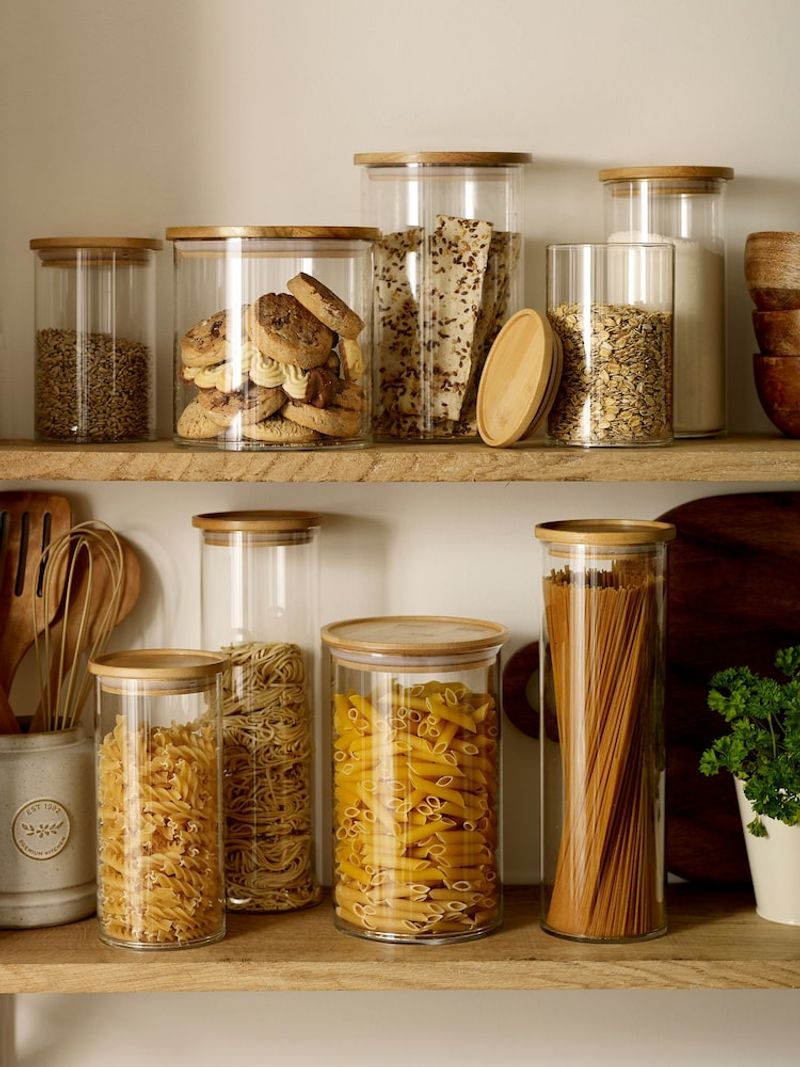
Clear glass containers with simple wooden or black lids transform ordinary ingredients into visual texture. Fill with items that offer natural color variation—coffee beans, granola, dried pasta, or flours.
Group in varying heights, creating a small cityscape of cylinders. The transparency keeps the look light while wood or matte black tops tie them to other elements in the kitchen without feeling matchy-matchy.
13. Small Ceramic Vase
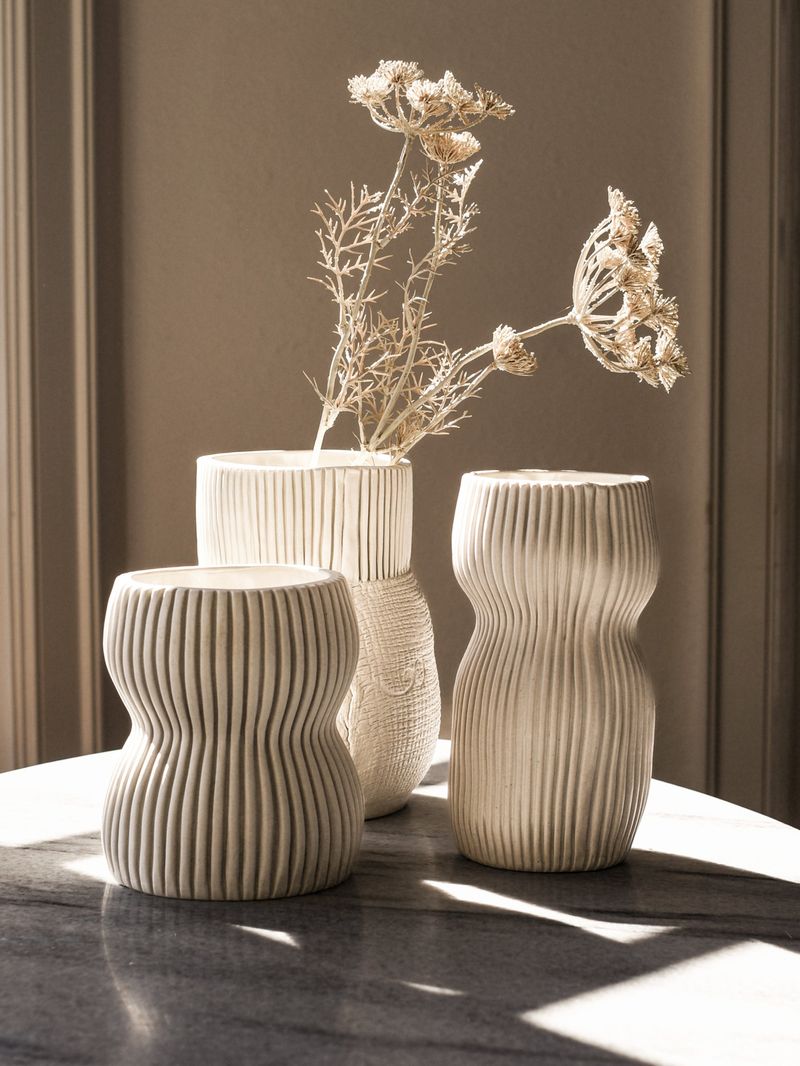
A stout, architectural vase with interesting form works even without flowers. Look for asymmetrical shapes or subtle texture rather than ornate patterns—the silhouette should hold visual interest alone.
When filled, stick with simple arrangements: a few stems of eucalyptus, a single branch, or wildflowers casually gathered. The imperfection of hand-thrown pottery brings artisanal character that mass-produced decor lacks.
14. Woven Bread Basket
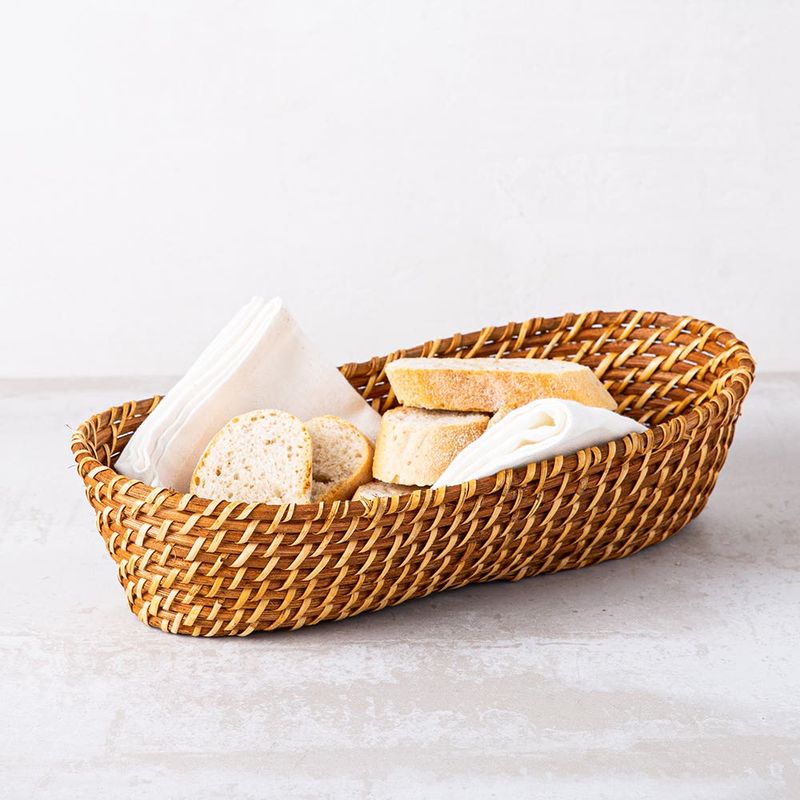
A shallow basket in natural rattan or water hyacinth introduces organic texture against hard countertops. The irregular weave pattern creates visual interest even without contents.
Use for fresh bread during meals, then fruit or mail between times. The low profile doesn’t block sightlines across the island, maintaining conversation flow while still defining space and adding a layer of casual sophistication.
15. Vintage Mortar and Pestle
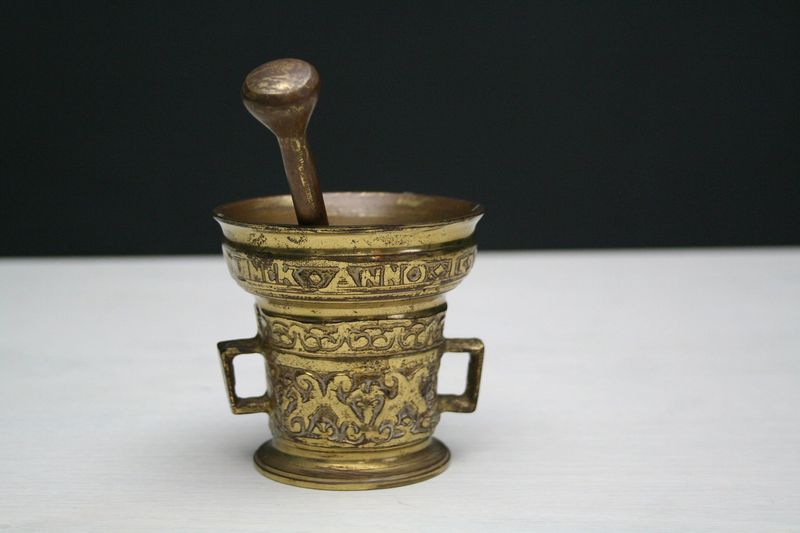
A substantial mortar and pestle in marble, brass, or aged wood carries the weight of culinary tradition. The contrast between smooth interior and rough exterior creates textural interest even when not in use.
Position prominently as a statement about serious cooking. The tactile invitation to grind herbs and spices by hand suggests a thoughtful approach to food preparation, elevating the kitchen from merely functional to intentionally crafted.
16. Low Profile Tray
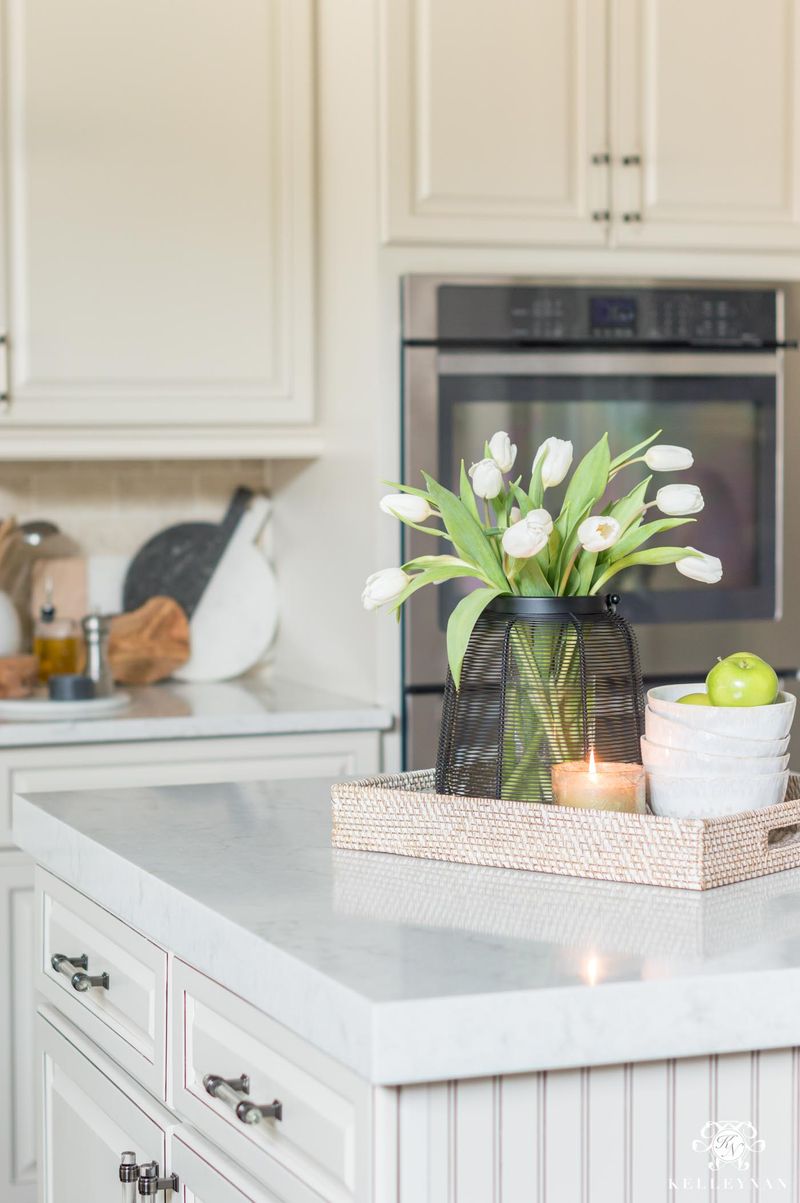
A rectangular tray with minimal edges in wood, lacquer, or woven material creates an island-within-an-island for smaller items. The defined perimeter instantly transforms random objects into a curated collection.
Pick a material that contrasts with your countertop for visual definition. The contained arrangement prevents the scattered look that makes even beautiful objects read as clutter when dispersed across an entire surface.

